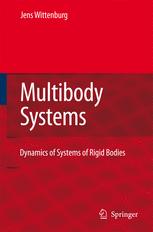

Most ebook files are in PDF format, so you can easily read them using various software such as Foxit Reader or directly on the Google Chrome browser.
Some ebook files are released by publishers in other formats such as .awz, .mobi, .epub, .fb2, etc. You may need to install specific software to read these formats on mobile/PC, such as Calibre.
Please read the tutorial at this link: https://ebookbell.com/faq
We offer FREE conversion to the popular formats you request; however, this may take some time. Therefore, right after payment, please email us, and we will try to provide the service as quickly as possible.
For some exceptional file formats or broken links (if any), please refrain from opening any disputes. Instead, email us first, and we will try to assist within a maximum of 6 hours.
EbookBell Team

4.3
38 reviewsMultibody systems investigated in the book are composed of rigid bodies. The bodies are interconnected in an arbitrary configuration by joints and force elements of arbitrary nature. Typical examples of multibody systems are linkages in machines, vehicles and industrial robots.
A characteristic feature of the formalism presented is the application of graph-theoretical concepts. The interconnection structure of a multibody system is mapped onto a graph whose vertices and arcs represent bodies and interconnections of bodies, respectively. Codes based on the formalism have found important applications in the automotive industry and in other branches of engineering.
Special systems investigated in the book are systems with tree-structure, systems with revolute joints only, systems with spherical joints only, systems with nonholonomic constraints and systems in planar motion. By applying the said concepts of graph theory to linear oscillators new formulations are found for mass-, damping and stiffness matrices. A separate chapter is devoted to the problem of collision of a multibody system either with another multibody system or with itself.
Introductory chapters deal with basic elements of rigid body kinematics and dynamics. A short chapter is devoted to classical, analytically soluable problems of rigid body dynamics.
This book is addressed to graduate students and to R & D engineers.